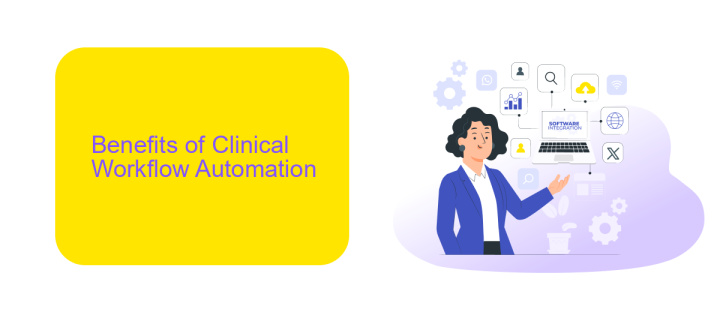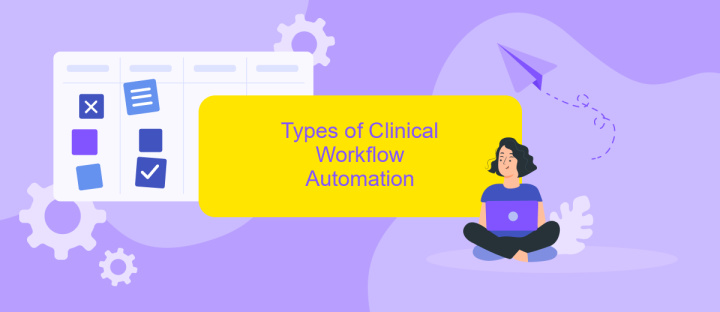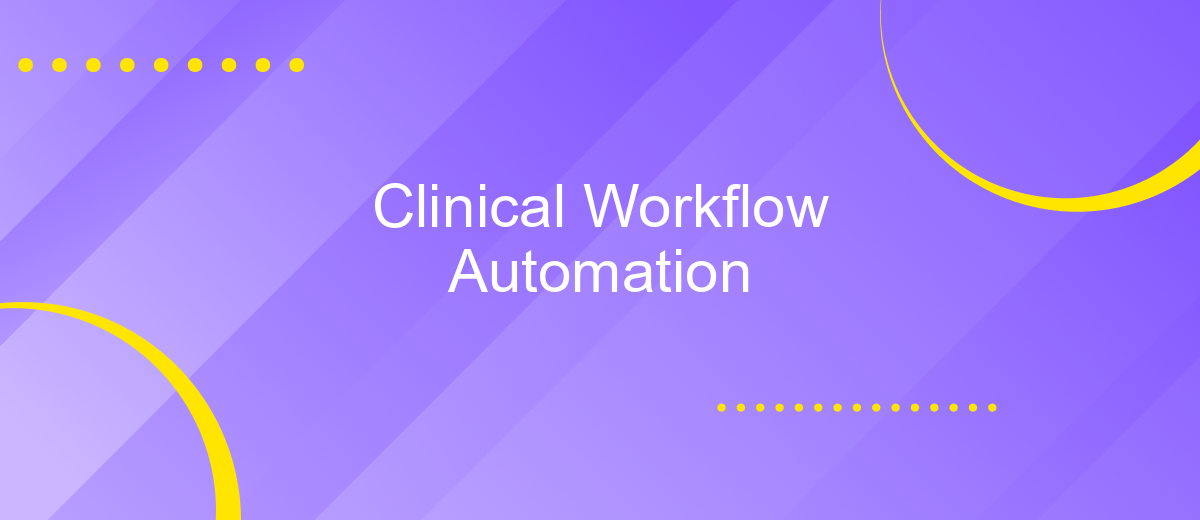Clinical Workflow Automation
Clinical workflow automation is transforming the healthcare industry by streamlining processes, reducing errors, and enhancing patient care. By leveraging advanced technologies such as artificial intelligence and machine learning, healthcare providers can optimize their operations, improve efficiency, and ensure better outcomes. This article explores the key benefits, challenges, and future prospects of clinical workflow automation in modern medical practice.
Introduction
Clinical Workflow Automation is revolutionizing the healthcare industry by streamlining processes and improving efficiency. By automating routine tasks, healthcare providers can focus more on patient care and less on administrative duties. This not only enhances productivity but also reduces the likelihood of human error, leading to better patient outcomes.
- Increased efficiency through task automation
- Reduced human error in clinical processes
- Enhanced focus on patient care
One of the key components of successful clinical workflow automation is the integration of various systems and tools. Services like ApiX-Drive facilitate seamless integration, allowing healthcare providers to connect different applications and automate data transfer. This ensures that information flows smoothly across platforms, further enhancing the efficiency and effectiveness of clinical workflows.
Benefits of Clinical Workflow Automation

Clinical workflow automation offers significant benefits by streamlining various processes within healthcare settings. By automating routine tasks, healthcare professionals can focus more on patient care rather than administrative duties. This leads to improved efficiency, reduced human errors, and faster turnaround times. Automation also ensures that critical information is accurately recorded and easily accessible, enhancing decision-making and patient outcomes.
Moreover, integrating automation tools such as ApiX-Drive can further enhance clinical workflows by facilitating seamless data exchange between different healthcare systems. ApiX-Drive allows for easy setup of integrations without requiring extensive technical knowledge, enabling healthcare facilities to connect various applications and services effortlessly. This not only improves data consistency and accuracy but also saves time and resources, ultimately contributing to a more efficient and effective healthcare environment.
Types of Clinical Workflow Automation

Clinical workflow automation is transforming the healthcare industry by streamlining processes and improving efficiency. There are several types of clinical workflow automation that can be implemented to enhance patient care and administrative tasks.
- Electronic Health Records (EHR) Automation: Automates the management of patient records, reducing manual entry and errors.
- Appointment Scheduling: Uses automated systems to manage patient appointments, reminders, and cancellations.
- Billing and Coding: Streamlines the billing process by automating coding and claims submission.
- Prescription Management: Automates the prescription process, ensuring accuracy and timely delivery to pharmacies.
- Integration Services: Tools like ApiX-Drive facilitate seamless integration between various healthcare systems, improving data flow and interoperability.
By implementing these types of clinical workflow automation, healthcare providers can focus more on patient care and less on administrative tasks. The use of integration services like ApiX-Drive further enhances efficiency by ensuring that different systems work together seamlessly, providing a more cohesive and effective healthcare environment.
Implementation of Clinical Workflow Automation

Implementing clinical workflow automation involves several critical steps to ensure a seamless transition and optimal functionality. Initially, it is essential to conduct a thorough assessment of existing workflows to identify areas that can benefit from automation. This assessment helps in understanding the specific needs and challenges of the clinical environment.
Once the assessment is complete, the next step is to select appropriate automation tools and platforms. These tools should be capable of integrating with existing systems to ensure a smooth flow of information. ApiX-Drive, for instance, offers robust integration capabilities that can connect various healthcare applications, streamlining data exchange and reducing manual input.
- Conduct a detailed workflow assessment
- Select suitable automation tools and platforms
- Integrate tools with existing systems using services like ApiX-Drive
- Train staff on new automated processes
- Monitor and optimize workflows continuously
Effective training for staff on the new automated processes is crucial for successful implementation. Continuous monitoring and optimization of the workflows ensure that the automation tools are functioning as intended and delivering the desired improvements. By following these steps, healthcare facilities can enhance efficiency, reduce errors, and ultimately improve patient care.
Future of Clinical Workflow Automation
The future of clinical workflow automation promises to revolutionize healthcare by streamlining processes, reducing human error, and enhancing patient care. Advanced technologies such as artificial intelligence (AI), machine learning, and robotic process automation (RPA) will play a pivotal role in this transformation. These technologies can handle repetitive tasks, analyze vast amounts of data, and provide predictive insights, allowing healthcare professionals to focus more on patient interaction and critical decision-making. Automation will also lead to more efficient scheduling, inventory management, and administrative tasks, ultimately improving the overall efficiency of healthcare facilities.
Integration of various systems and tools will be crucial for the success of clinical workflow automation. Services like ApiX-Drive can facilitate seamless integration between different healthcare applications, ensuring that data flows smoothly and accurately across platforms. This capability will be essential for maintaining up-to-date patient records, coordinating care among different departments, and enhancing communication within healthcare teams. As these technologies continue to evolve, we can expect a more interconnected and efficient healthcare ecosystem, where the focus remains firmly on delivering high-quality patient care.


FAQ
What is Clinical Workflow Automation?
How can Clinical Workflow Automation benefit healthcare providers?
What types of tasks can be automated in a clinical workflow?
How secure is Clinical Workflow Automation?
How can I integrate Clinical Workflow Automation into my existing systems?
Apix-Drive will help optimize business processes, save you from a lot of routine tasks and unnecessary costs for automation, attracting additional specialists. Try setting up a free test connection with ApiX-Drive and see for yourself. Now you have to think about where to invest the freed time and money!

